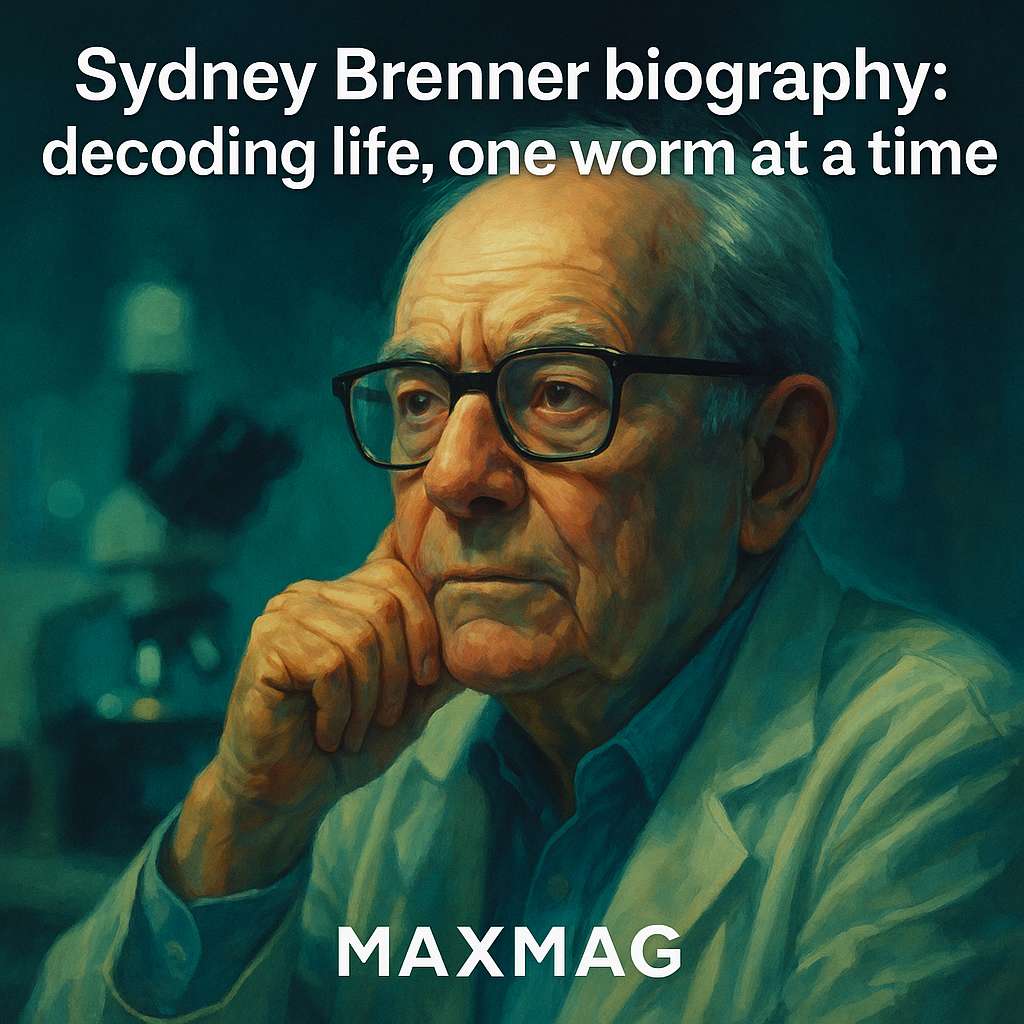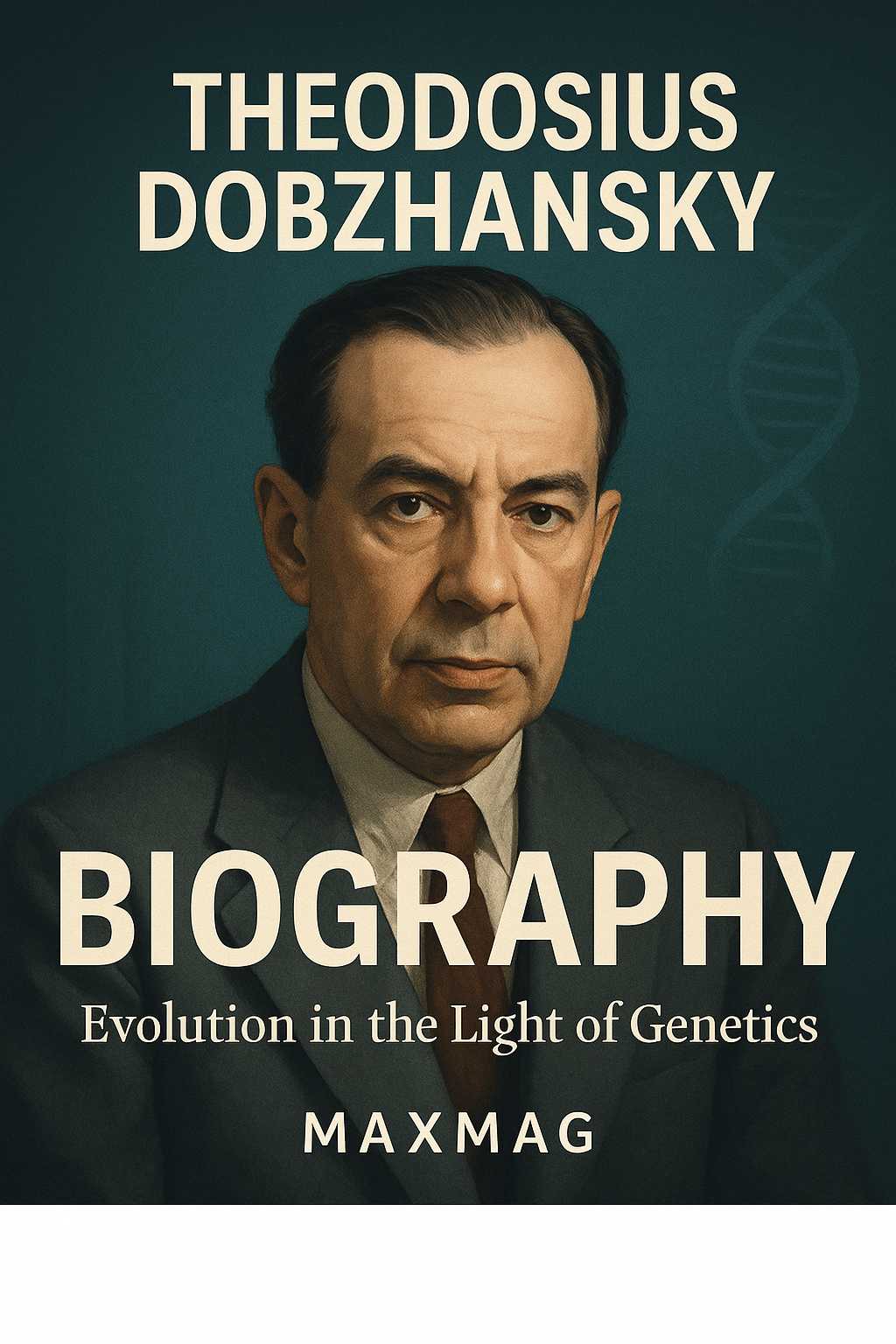
One way to begin a J.B.S. Haldane biography is in a muddy trench on the Western Front. A young British officer, already famous in his regiment for a reckless courage that bordered on suicidal, peered over the lip of the trench to test how close enemy bullets came to his skull. He logged the results in a notebook, as if the gunfire were just another laboratory instrument. This strange combination of fearlessness, curiosity and mathematical thinking would shape one of the most influential lives in twentieth-century genetics and evolutionary biology.
J.B.S. Haldane moved easily between worlds that usually do not meet in a single life story: elite Oxford drawing rooms and noisy trade-union halls, abstract population genetics equations and fiery political essays, laboratory experiments and public debates on religion. Any serious J.B.S. Haldane biography has to hold all of these contradictions together: the brilliant theorist and the committed Marxist, the loyal son and the relentless critic of power, the careful experimentalist and the enthusiastic prophet of future technologies.
J.B.S. Haldane at a glance
- Who: John Burdon Sanderson (J.B.S.) Haldane, British biologist and public intellectual.
- Field and era: Genetics and evolutionary biology, early to mid-20th century science.
- Headline contributions: Pioneered population genetics, co-created the modern evolutionary synthesis, and helped formulate the “primordial soup” idea of life’s origins.
- Why he matters today: His models underpin much of modern evolutionary theory, while his arguments about science, politics and ethics still echo in current debates.
Early Life and Education of J.B.S. Haldane
Growing up in a laboratory household
J.B.S. Haldane was born in Oxford in 1892, into a home where scientific questions were ordinary dinner-table talk. His father, the physiologist John Scott Haldane, was famous for studying how gases affected the body and for personally descending into dangerous mines to investigate explosions and poisoning. For a boy who would later become a population genetics pioneer, the message was clear: you did not simply read about the world, you experimented on it — and on yourself if necessary.
As a child, Haldane accompanied his father into coal mines and decompression chambers, serving as a subject in physiological experiments. The casual way in which risk and curiosity mixed in the Haldane household left a permanent mark. A serious J.B.S. Haldane biography cannot ignore this early exposure to hands-on, sometimes hazardous science. It gave him both a taste for self-experimentation and a certain contempt for purely armchair speculation.
Classics, mathematics and the making of a scientist
At school and later at Oxford, Haldane studied not only science but also Latin and Greek. He loved the classics and could quote Homer at length, yet he was also drawn to the elegance of mathematics. This unusual combination – literary breadth and quantitative skill – would allow him to become one of the architects of the history of genetics, connecting lab observations with abstract models of how genes spread through populations.
He excelled academically, but he also enjoyed provoking authority. Teachers and college tutors frequently found him brilliant and exasperating in equal measure. In later years, when the J.B.S. Haldane biography turned into a tale of public controversy, those early sparks of rebellion would look, in hindsight, less like accidents and more like destiny.
J.B.S. Haldane biography and the Birth of His Big Ideas
War, wounds and scientific questions
When the First World War broke out, Haldane joined the British Army and served on the Western Front. He was wounded several times. In the chaos of trench warfare, he continued to think like a scientist, noting how shells exploded and how pressure waves traveled. The experience was brutal, but it also deepened his sense that biology and physics were intertwined with real human suffering.
How war shaped the J.B.S. Haldane biography
The war left Haldane with physical scars and a sharpened political conscience. He saw first-hand the costs of nationalism and class inequality in twentieth-century science and society. After the Armistice, as he returned to academic work, he carried a determination that research should not be sealed off from the world’s problems. For anyone tracing the J.B.S. Haldane biography, this mixture of frontline experience and mathematical thinking helps explain why he later believed so strongly that genetics must be understood in its social context.
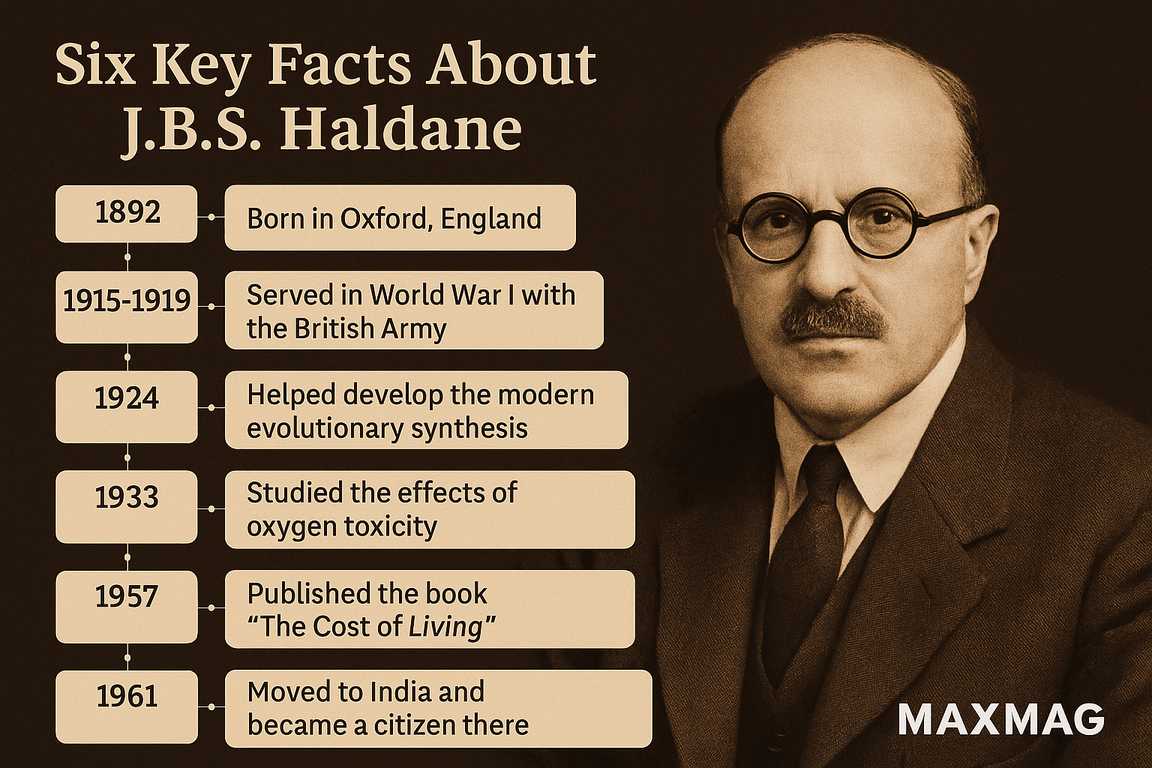
Key Works and Major Contributions of J.B.S. Haldane
Pioneering population genetics
In the 1920s and 1930s, Haldane produced a series of papers that turned Darwin’s qualitative ideas about natural selection into precise equations. Alongside Ronald Fisher and Sewall Wright, he showed how gene frequencies in a population change over time under the forces of selection, mutation, migration and chance. These were not just wordy metaphors but hard mathematics that laid the foundations for the modern evolutionary synthesis.
For non-specialists, one way to picture Haldane’s achievement is to imagine evolution as a card game played over millions of hands. Darwin had described the rules in general terms, but Haldane calculated the odds. He asked: how strong does natural selection have to be for a beneficial gene to spread? How quickly can harmful mutations be eliminated? The answers, embedded in his equations, still shape evolutionary biology classrooms and research papers today.
From “primordial soup” to the causes of evolution
Haldane is also remembered for his ideas about the origin of life. In a famous essay, he suggested that early Earth’s atmosphere could have allowed simple molecules to form a “primordial soup” from which life emerged. This vision, developed independently but in parallel with the Russian biochemist Alexander Oparin, became a central theme in 20th century science discussions of life’s beginnings.
His book The Causes of Evolution brought together his theoretical work in population genetics and made it accessible to a wider audience of scientists and students. Today, many university courses still point to this volume as a landmark in the J.B.S. Haldane biography and in the story of evolutionary theory more broadly. For readers who want a broader context on the development of evolutionary thought, introductory resources at the University of California’s evolution education site offer a useful companion to Haldane’s own writings.
Popular science essays and bold predictions
Beyond technical papers, Haldane wrote vivid essays for general readers in collections such as Daedalus and Possible Worlds. He speculated about future reproductive technologies, space travel and the ethical challenges of scientific progress. Some of his predictions were off the mark, but many proved uncannily accurate. Those essays are a reminder that the J.B.S. Haldane biography is not just about equations and lab experiments; it is also about one of the earliest great science communicators of the modern age.
Methods, Collaborations and Working Style
Self-experimentation and physical courage
Haldane inherited from his father an almost casual attitude to self-experimentation. He subjected himself to extremes of pressure, oxygen deprivation and other stresses to test hypotheses about human physiology. In some experiments, participants lost consciousness; Haldane himself suffered damaged eardrums and other long-term health effects. For him, these trials were part of being an honest British biologist: if a procedure was too dangerous for him, he argued, it was too dangerous for anyone else.
Collaborators in the new genetics
As genetics moved from a cottage industry to a core science, Haldane worked alongside and sometimes against other major figures. He debated Ronald Fisher fiercely, disagreed with Sewall Wright on certain points, and influenced a generation of younger scientists. His style was argumentative but rarely petty; he relished intellectual combat, even with friends. Any detailed J.B.S. Haldane biography must reckon with his role in forging a community of theoretical biologists who were willing to fight over ideas but also share data and methods.
How the J.B.S. Haldane biography shaped his lab
In his laboratory, Haldane was both demanding and generous. He could be impatient with sloppiness, yet he also gave young researchers room to pursue risky questions. His mix of mathematical rigour and political passion created an environment where students felt they were part of something larger than themselves: not just experiments, but a movement to modernise biology. That sense of purpose is one reason the J.B.S. Haldane biography still resonates in discussions of how to train scientists today.
Controversies, Criticism and Misconceptions
Marxism, politics and scientific independence
Haldane joined the Communist Party of Great Britain in the 1930s, convinced that Marxism offered a powerful framework for analysing society. He wrote essays arguing that science could not be neutral, that researchers inevitably served some set of interests. This position made him a hero to some and a villain to others, especially as the Cold War intensified.
Religion, politics and the J.B.S. Haldane biography
His outspoken atheism and his public defence of the Soviet Union, particularly in the early years, led some critics to dismiss him as more propagandist than scientist. Later, as the abuses of Stalinism became undeniable, Haldane distanced himself from some of his earlier positions. A balanced J.B.S. Haldane biography has to acknowledge both his courage in speaking against British imperialism and his misjudgments about the realities of life under authoritarian regimes.
The Lysenko affair and the limits of loyalty
One of the most damaging episodes in Haldane’s public life was the controversy over Trofim Lysenko, the Soviet agronomist whose rejection of genetics caused disaster in Soviet agriculture. For a time, Haldane hesitated to criticise Lysenko openly, in part out of loyalty to the Soviet experiment. His critics seized on this as proof that political ideology had warped his scientific judgment.
Over time, Haldane acknowledged that his response had been inadequate. The episode remains a cautionary tale in the history of genetics and in the broader discussion of how politics and science interact. It is also a reminder that the J.B.S. Haldane biography, like any human story, includes serious mistakes as well as triumphs.
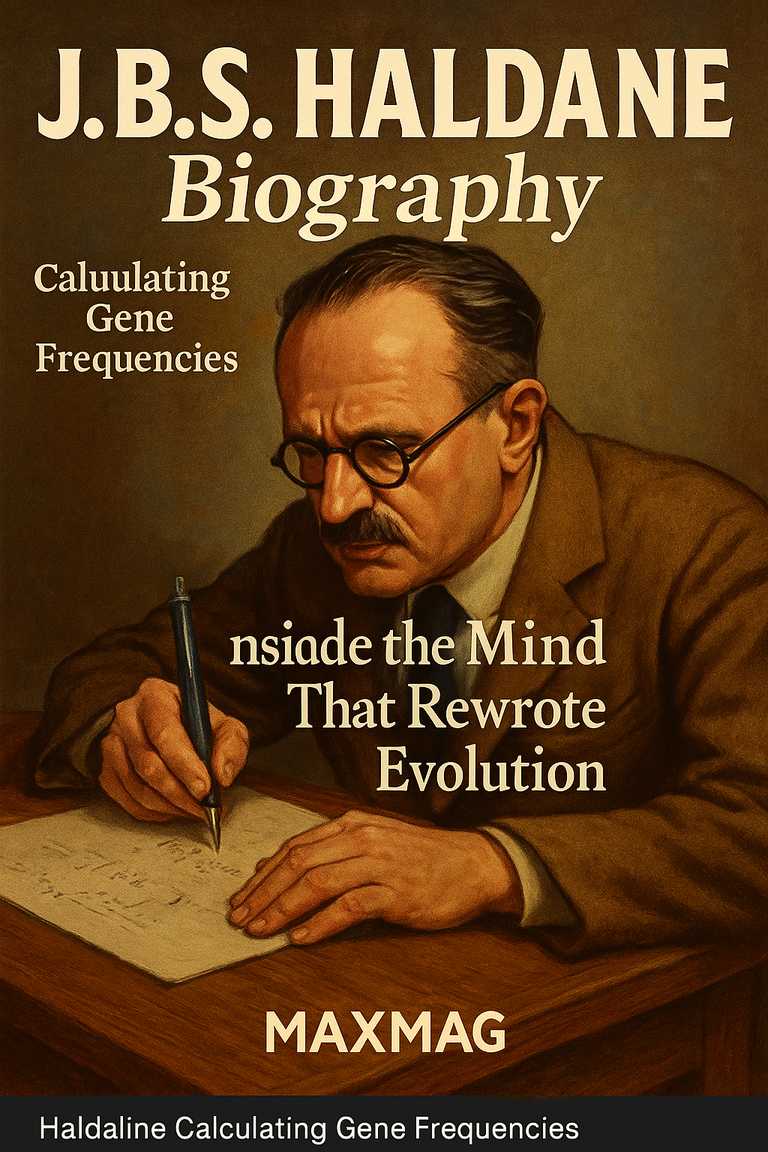
Impact on Genetics and on Wider Society
Foundations of modern population genetics
Today, when researchers model how a virus spreads, or how a gene for disease risk moves through a family, they often use tools that descend directly from Haldane’s work. His equations underpin everything from conservation biology to human medical genetics. He showed that evolution is not a vague “progress” but a measurable process, one that can be tracked and predicted, at least in broad outline.
This is one reason why many histories of science treat the J.B.S. Haldane biography as central to understanding how biology became a modern, quantitative discipline. Along with Fisher and Wright, he helped transform Darwin’s theory from a grand narrative into a testable set of models.
Public engagement and the scientist as citizen
Haldane believed that scientists had obligations beyond their laboratories. He gave numerous public lectures, wrote newspaper columns and spoke at political rallies. He insisted that ordinary citizens had a right to understand what was happening in genetics and other rapidly advancing fields. His example still shapes discussions of the J.B.S. Haldane legacy: the idea that researchers should be active participants in democracy, not quiet technicians in the background.
Modern debates over issues such as gene editing, climate change and artificial intelligence echo some of the themes Haldane raised in his essays. Reporting in major US newspapers like The New York Times still grapples with the same question he asked: how can society steer powerful technologies without stifling discovery?
Personal Beliefs, Character and Private Life
Wit, stubbornness and a taste for provocation
Those who knew Haldane describe him as witty, generous and infuriating. He could dismantle an opponent’s argument with a single cutting joke, then buy them a drink afterward. His writing is full of memorable lines, including his remark that the Creator, if one existed, must have “an inordinate fondness for beetles,” given how many species of them there are.
He dressed simply, often in crumpled clothes, and seemed largely indifferent to personal comfort. These traits became part of the public image captured in any lively J.B.S. Haldane biography: the eccentric professor who walked to work in worn shoes, the intellectual who preferred arguments and experiments to ceremony and status.
Love, family and everyday life
Haldane’s personal relationships were complicated, as one might expect from someone so devoted to his work and politics. He married twice and maintained close ties with his sister Naomi Mitchison, a novelist and political activist in her own right. Friends recall a man who could be deeply warm but also distracted, absorbed in some calculation or essay even at social gatherings.
In the quieter moments of the J.B.S. Haldane biography, we see a man walking in the countryside, arguing with colleagues in smoky rooms, reading aloud from poetry, or explaining a new idea to a student over tea. These scenes remind us that behind the theories and controversies was a human being with everyday joys and sorrows.
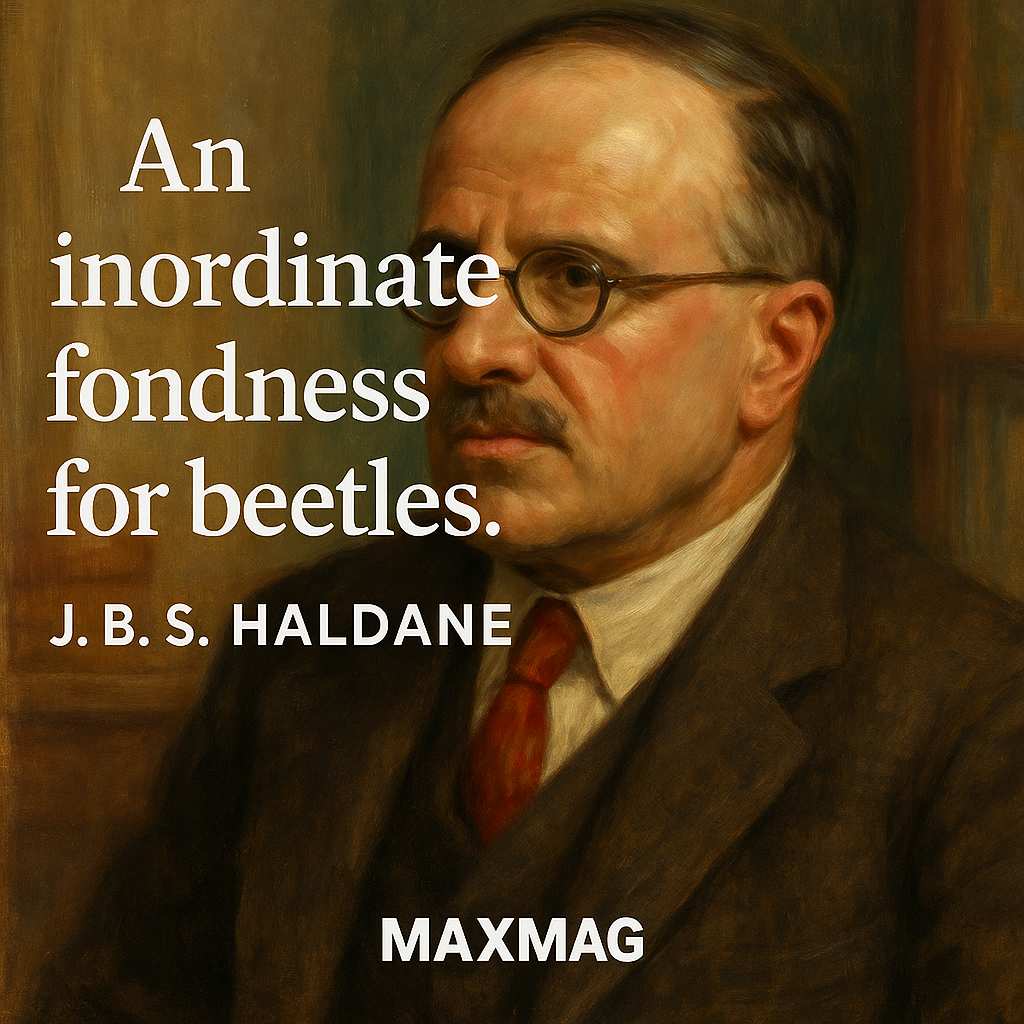
Later Years and Final Chapter of J.B.S. Haldane
Leaving Britain for India
In the 1950s, disillusioned with British politics and attracted by the promise of a newly independent India, Haldane moved to the subcontinent. He took Indian citizenship and worked at institutions such as the Indian Statistical Institute, helping to build up local capacity in genetics and statistics. For many commentators, this move is one of the most striking turns in the J.B.S. Haldane biography: a symbolic rejection of empire and a bet on a different scientific future.
Illness, humour and the end
In his later years, Haldane developed cancer. Even then, he approached his illness with the same unsentimental curiosity he had brought to war and laboratory work. He wrote a darkly humorous essay titled “Cancer’s a Funny Thing,” in which he reflected on his disease and on the human body’s vulnerabilities. He remained active in research and writing almost to the end.
Haldane died in 1964 in Bhubaneswar, India. His final wishes included that his body be used for medical education, a last gesture of commitment to science. The closing pages of any thoughtful J.B.S. Haldane biography emphasise this continuity: the boy who experimented in mines with his father, the man who experimented on himself in the lab, and the elderly scientist who turned even his own death into an educational tool.
The Lasting Legacy of the J.B.S. Haldane biography
Why Haldane still matters in today’s genetics
In modern genetics and evolutionary biology, Haldane’s name appears in textbooks, research papers and theorems. “Haldane’s rule” describes a pattern in hybrid animals: when one sex is absent, rare or sterile, it is usually the heterogametic sex (the one with two different sex chromosomes, such as XY in mammals). This insight continues to guide research into speciation and reproductive barriers.
His work on mutation rates, selection coefficients and the balance between genetic drift and natural selection remains fundamental. Even when newer models refine or replace his equations, researchers still speak his language. The J.B.S. Haldane biography thus becomes more than a story about one scientist; it is a lens on how ideas evolve in science, building on each other over decades.
Beyond the lab: ethics, politics and the scientist’s role
Haldane’s insistence that science is embedded in society feels particularly relevant today. Whether one agrees with his Marxism or not, his argument that researchers must think about who benefits from their work resonates in current debates over gene editing, data privacy and biotechnology. His J.B.S. Haldane legacy includes not only formulas but also a model of the scientist as an engaged citizen.
Understanding the J.B.S. Haldane biography helps us see that the history of modern biology is not a smooth march of progress, but a contested landscape where ideas, institutions and personal convictions collide. In tracing his life – from Oxford to the trenches, from London lecture halls to Indian research institutes – we also trace the complex trajectory of 20th century science itself. Remembering that story can sharpen how we think about today’s scientific choices, and about the futures we are quietly building in our own laboratories and policies.
Frequently Asked Questions about the J.B.S. Haldane biography
Q1: Who was J.B.S. Haldane in the context of modern genetics?
Q2: What are the main scientific contributions highlighted in the J.B.S. Haldane biography?
Q3: How did Haldane’s political views influence his scientific career?
Q4: Why did J.B.S. Haldane move from Britain to India?
Q5: What is Haldane’s rule, and why is it important?
Q6: How is the J.B.S. Haldane biography relevant to debates about science today?





